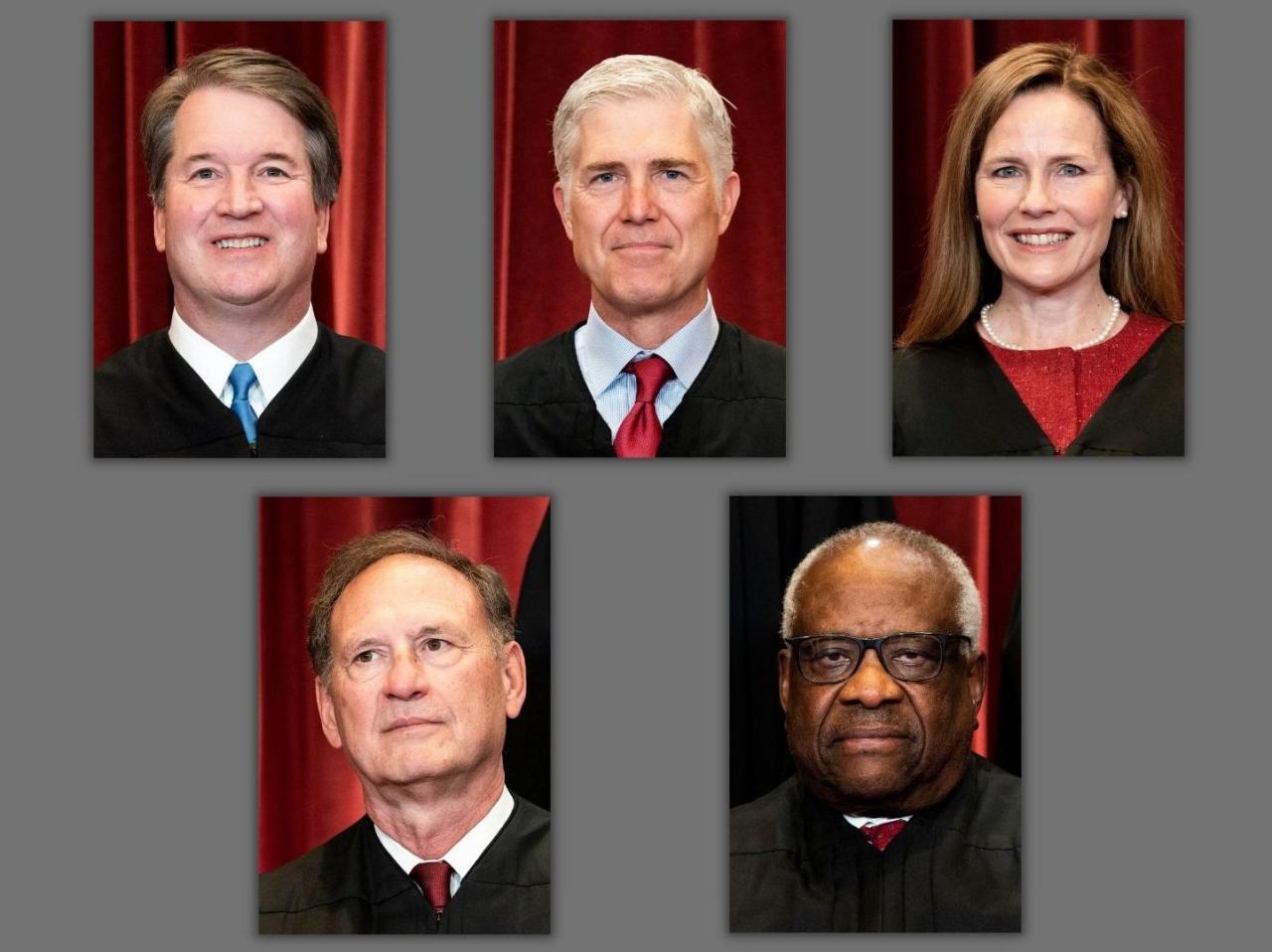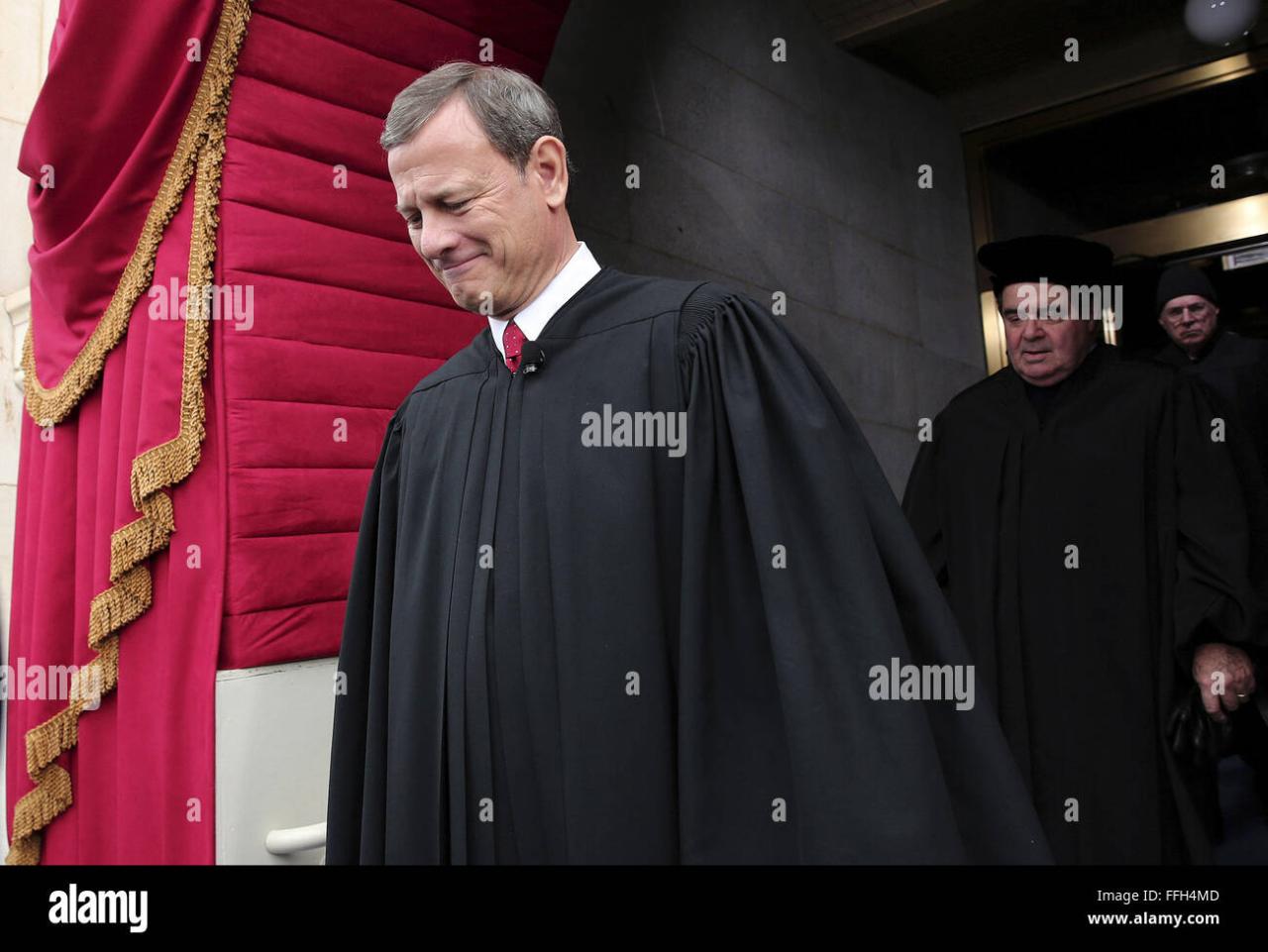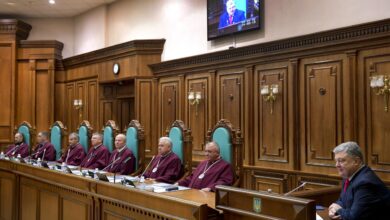
Supreme Court Originalism Conservative Tradition
Supreme Court originalism tradition conservative explores the intersection of legal interpretation and conservative political thought. This deep dive examines how originalist principles are applied to constitutional law, exploring its historical roots and modern applications. We’ll dissect the arguments for and against this approach, considering its impact on current Supreme Court decisions and its potential future trajectory.
The core concept revolves around interpreting the Constitution based on the original intentions and understanding of its framers. This approach contrasts with other methods, such as “living constitutionalism,” which allows for adaptation to modern societal norms. Understanding the arguments, evidence, and potential pitfalls of originalism is crucial for navigating the ongoing debate about the Constitution’s meaning and application.
Defining Originalism

Originalism, a prominent school of thought within constitutional interpretation, centers on the idea that the meaning of the Constitution should be derived from the understanding of its framers and ratifiers. This approach contrasts with other interpretive methods, such as those emphasizing evolving societal values or current needs. Originalism posits that the Constitution’s text, structure, and historical context provide the key to understanding its intended application.Originalism seeks to maintain the integrity of the founding generation’s intentions, believing this approach safeguards against judicial activism and ensures the Constitution’s enduring relevance.
However, different interpretations of “original meaning” lead to diverse applications of the doctrine.
Key Tenets of Originalism
Originalism rests on the fundamental principle that the Constitution’s meaning should be tied to the understanding of its authors. This involves examining the historical context, the intentions of the framers, and the contemporary understanding of the language at the time of its adoption. Different schools of originalist thought emphasize different aspects of this historical context, leading to varied interpretations.
Different Interpretations of Originalism
Originalism isn’t monolithic; it encompasses various approaches to understanding the Constitution’s original meaning. These variations often stem from differing views on what constitutes the “original public meaning” of the text.
The Supreme Court’s originalism tradition, a conservative approach, often sparks debate. However, the soaring real estate market in California, with homes now frequently topping $800,000 800000 dollar homes california , raises interesting questions about the relationship between economic realities and legal interpretations. Ultimately, the originalist tradition continues to be a significant factor in shaping legal discourse and judicial decisions.
- Textual Originalism focuses on the plain meaning of the words used in the Constitution, as understood by the people at the time of its adoption. This approach emphasizes the text itself as the primary source for determining the Constitution’s meaning, minimizing reliance on external historical evidence.
- Historical Originalism goes beyond the text to consider the historical context and the intentions of the framers and ratifiers. This approach acknowledges that the meaning of words and phrases can evolve over time, but it also emphasizes the need to understand those meanings in the context of the 18th century.
- Original Intent Originalism, a specific subset of historical originalism, seeks to determine the specific intentions of the framers regarding a particular provision of the Constitution. This approach is more challenging to apply, as the intentions of individuals can be complex and difficult to discern with certainty.
Schools of Thought Within Originalism
Different schools of thought within originalism offer varying approaches to interpreting the Constitution. These schools differ in their emphasis on the sources of evidence and the methods used to ascertain the original meaning.
| School | Key Tenet | Focus | Example |
|---|---|---|---|
| Textual | The Constitution’s meaning is derived from the plain meaning of the text, as understood by those who adopted it. | Literal language, dictionary definitions, contemporary usage. | Interpreting “cruel and unusual punishment” based on the understanding of these words in 1789. |
| Historical | The Constitution’s meaning is derived from the historical context and intentions of the framers and ratifiers. | Circumstances surrounding adoption, debates in the Constitutional Convention, contemporary documents. | Interpreting the Commerce Clause considering the economic conditions of the 18th century. |
| Original Intent | The Constitution’s meaning is derived from the specific intentions of the framers regarding a particular provision. | Framers’ personal writings, committee reports, debates. | Interpreting the Second Amendment based on the framers’ understanding of the need for a well-regulated militia. |
Originalism and the Conservative Tradition
Originalism, a method of interpreting the Constitution, has become deeply intertwined with the conservative political tradition in the United States. This connection is not accidental; originalist arguments often align with pre-existing conservative values and beliefs regarding limited government and individual liberty. This relationship, however, is complex and not without its critics.Originalism’s appeal to conservatives stems from its perceived grounding in historical precedent.
It promises a stable and predictable legal framework, rooted in the intentions of the framers. This contrasts with other approaches that, in the eyes of some conservatives, allow for evolving interpretations that can be susceptible to political influence. A core belief in the importance of the Constitution as a fixed document is central to this alignment.
The Relationship Between Originalism and Conservative Policy Positions
Originalist arguments have frequently been used to support conservative policy positions on issues such as gun rights, religious freedom, and economic regulation. For instance, arguments about the Second Amendment’s intended scope have been used to challenge gun control laws. Similarly, interpretations of the Establishment Clause in the First Amendment are frequently invoked to advocate for religious freedom, often in opposition to policies perceived as encroaching on religious practice.
The Supreme Court’s originalism tradition, often seen as conservative, is a fascinating area of legal debate. Recent events like the tragic armorer Alec Baldwin Rust shooting highlight the complex interplay between legal interpretation and real-world consequences. How do we balance the principles of originalism with the need for contemporary justice? This ongoing discussion continues to shape our understanding of the court’s role in American society.
Originalist arguments concerning the Commerce Clause have been instrumental in limiting federal regulation of the economy.
Benefits of Originalism for Conservative Legal Thought
Originalism offers several perceived advantages to conservative legal thought. It provides a framework for limiting government power by grounding constitutional interpretation in the intentions of the framers. This approach is often seen as a safeguard against perceived excesses of judicial activism and the potential for the judiciary to impose contemporary values onto the Constitution. This perceived constraint on the power of the judiciary is particularly attractive to those who prioritize limited government.
Comparison of Originalism with Other Approaches
Originalism contrasts sharply with other approaches to constitutional interpretation, such as those emphasizing evolving standards or the contemporary needs of society. Living constitutionalism, for example, argues that the Constitution should be interpreted in light of modern circumstances. This approach, in the eyes of originalists, risks substituting the will of the current majority for the intent of the framers.
A comparative look at these approaches reveals the fundamental difference in their understanding of the Constitution’s role and function.
Criticisms of Originalism by Non-Conservatives
Originalism faces significant criticism from those outside the conservative tradition. One major concern is the difficulty of definitively ascertaining the original intent of the framers, given the diverse perspectives and differing motivations within the founding generation. Furthermore, critics argue that originalism can lead to unjust or outdated outcomes by applying historical interpretations to modern contexts. The potential for the application of potentially flawed or biased interpretations from the past is a significant concern for critics.
Different Viewpoints on the Relationship Between Originalism and Conservatism
| Viewpoint | Argument | Evidence |
|---|---|---|
| Conservative | Originalism provides a stable and consistent framework for interpreting the Constitution, preserving the intent of the framers and limiting government power. | Arguments about the Second Amendment’s intended scope; interpretations of the Establishment Clause. |
| Liberal | Originalism can lead to unjust or outdated outcomes by applying historical interpretations to modern contexts, potentially failing to address contemporary social needs and issues. | Potential for upholding laws that discriminate against minority groups, based on historical interpretations. |
Contemporary Applications of Originalist Thought: Supreme Court Originalism Tradition Conservative
Originalism, a legal philosophy emphasizing the interpretation of the Constitution based on the intentions and understanding of its framers, has been a significant force in recent Supreme Court decisions. This approach, often intertwined with conservative political ideologies, has led to notable rulings with profound implications for various aspects of American life. Examining these applications reveals the practical consequences of originalist thought in the modern context.Originalist arguments often center on the belief that the Constitution’s meaning should be fixed at the time of its adoption.
This perspective, while seemingly straightforward, presents complex challenges in applying historical understanding to contemporary issues. Judges applying originalism must navigate the nuances of historical context, the ambiguities inherent in founding-era documents, and the evolving societal values that often shape legal interpretation. This exploration of recent Supreme Court cases illuminates the intricacies of originalism’s application and the resulting legal and political ramifications.
Recent Supreme Court Cases Illustrating Originalist Principles
Originalist principles have been central to several recent Supreme Court cases, influencing the Court’s interpretation of constitutional provisions. These decisions have sparked considerable debate and highlight the contentious nature of applying historical understanding to contemporary legal challenges.
Table of Key Supreme Court Cases
| Case | Issue | Originalist Argument | Outcome |
|---|---|---|---|
| Dobbs v. Jackson Women’s Health Organization (2022) | Constitutional right to abortion | Originalists argued that the Constitution, as understood at the time of its ratification, did not protect a right to abortion. They pointed to the absence of explicit language concerning abortion and the societal context of the time. | The Court overturned Roe v. Wade, effectively eliminating the constitutional right to abortion. |
| National Federation of Independent Business v. Sebelius (2012) | Constitutional authority of Congress to enact the Affordable Care Act (ACA) | Originalists argued that the Commerce Clause, as understood at the time of the Constitution’s ratification, did not grant Congress the authority to mandate health insurance. Their arguments focused on the limited scope of federal power. | The Court upheld the ACA’s individual mandate, but on non-originalist grounds. |
| District of Columbia v. Heller (2008) | Second Amendment right to bear arms | Originalists argued that the Second Amendment protected an individual right to bear arms for self-defense, drawing on historical evidence and the understanding of the right in the founding era. | The Court recognized an individual right to bear arms, significantly altering the interpretation of the Second Amendment. |
Reception and Consequences of Originalist Decisions
The Court’s originalist decisions have been met with varying responses from different groups and stakeholders. Supporters often praise the approach for its adherence to the Constitution’s historical intent, while critics argue that it hinders the Constitution’s adaptability to changing societal needs. These differing perspectives underscore the profound political and legal consequences of applying originalist principles in modern cases.
The outcomes of these cases have influenced political discourse, shaping legislative agendas and prompting further legal challenges. The political consequences can be significant, as the Court’s decisions often align with the ideological positions of specific political groups.
Challenges to Originalism
Originalism, a method of constitutional interpretation rooted in the founders’ intent, faces significant criticisms regarding its application in contemporary society. Its reliance on historical context raises concerns about its relevance to modern issues and its ability to adapt to evolving societal values. This section explores the limitations of originalism, highlighting problematic interpretations and contrasting it with alternative approaches.Originalism, while seemingly offering a clear and objective method, often struggles to provide definitive answers on complex modern issues.
The difficulty in precisely ascertaining the original intent of the framers, combined with the inherent ambiguities of historical documents, frequently leads to differing interpretations and outcomes. Moreover, the potential for bias in selecting and interpreting historical evidence further complicates the application of originalism.
The Supreme Court’s originalism tradition, a conservative approach, often focuses on the intent of the Founding Fathers. However, real-world situations, like the recent disappearance of a couple on a boat off the coast of Grenada, highlight the complexities of interpreting the law in the modern era. This case, covered in detail at couple missing boat grenada , brings into question how historical interpretations hold up against current events, forcing a reconsideration of the originalist approach to legal precedent.
Ultimately, the Supreme Court’s originalism tradition needs ongoing debate and adaptation.
Criticisms of Originalist Interpretations
Originalism’s primary weakness lies in its inherent limitations when confronting modern societal challenges. The historical context of the Constitution’s creation is vastly different from today’s environment, making it challenging to directly apply historical understandings to contemporary issues. Furthermore, the founding fathers did not anticipate the complexities and rapid changes that have occurred since their time. This lack of foresight often results in interpretations that are seen as inflexible and unable to address the evolving needs of a dynamic society.
Problematic Originalist Examples
Several instances highlight the potential for originalist interpretations to be deemed problematic and inadequate in the modern context. The Supreme Court’s decisions on issues like racial equality and gender equality have sometimes been criticized for being rooted in historical precedents that reflect societal biases from the past, rather than addressing contemporary concepts of fairness and equality. For example, some argue that originalist interpretations of the Second Amendment have hindered the ability to regulate gun ownership in a way that balances individual rights with public safety concerns.
These instances illustrate the potential for originalism to produce outcomes that conflict with contemporary values.
Alternative Approaches to Constitutional Interpretation
Living constitutionalism, a contrasting approach, emphasizes the Constitution’s adaptability to changing societal norms and values. Proponents of living constitutionalism argue that the Constitution is a living document, meaning its meaning should evolve over time to address contemporary challenges. This approach allows for a more dynamic interpretation that reflects the evolving values and needs of society.
Relevance of Originalism to Modern Issues
Originalism’s perceived lack of relevance to modern societal issues stems from its focus on the past. Critics argue that the framers’ intentions might not adequately address contemporary challenges, such as climate change, technological advancements, or evolving social norms. The complexities of modern society often require a more nuanced and adaptable approach to constitutional interpretation.
Originalism vs. Living Constitutionalism
The debate between originalism and living constitutionalism highlights fundamental differences in approaches to constitutional interpretation. Originalism seeks to adhere to the original intent of the framers, while living constitutionalism prioritizes the Constitution’s adaptability to contemporary needs. This difference often manifests in diverging interpretations of the same constitutional provisions. Living constitutionalism’s flexibility is often seen as a strength in navigating the complexities of modern society, while originalism’s emphasis on historical context is viewed as providing a more grounded and stable framework.
Potential Pitfalls of Originalist Interpretation
| Pitfall | Description | Example |
|---|---|---|
| Ignoring Societal Evolution | Originalism may fail to account for significant societal shifts and advancements, leading to outdated interpretations. | Interpretations of the Commerce Clause that do not consider the modern interconnected economy. |
| Difficulty in Determining Original Intent | Precisely determining the framers’ intentions on complex modern issues can be challenging and often results in differing interpretations. | Interpretations of the First Amendment concerning freedom of speech in the digital age. |
| Bias in Historical Interpretation | Historical interpretation can be influenced by contemporary biases, potentially leading to skewed interpretations of the past. | Interpretations of the Fourth Amendment regarding search and seizure in relation to new technologies. |
| Inability to Address Modern Challenges | Originalism might not effectively address contemporary problems due to its focus on the past. | Interpretations of the Constitution regarding environmental protection in the face of climate change. |
The Future of Originalism

Originalism, a cornerstone of conservative thought in Supreme Court jurisprudence, faces a complex future. Its continued application in the context of evolving societal norms and legal challenges will be crucial in determining its trajectory. The tradition’s ability to adapt and remain relevant will depend on its capacity to address modern concerns without sacrificing its core principles. This exploration delves into potential future developments, adaptations, and challenges.
Predicting the Future Trajectory of Originalist Thought
Originalist interpretations of the Constitution are expected to remain a significant force in Supreme Court decisions. However, the specific approach and focus of originalist arguments may shift. For example, the emphasis might move toward a more nuanced understanding of the historical context surrounding constitutional provisions, rather than a rigid adherence to a single, specific historical moment. This shift could lead to a greater focus on the evolving understanding of rights within the historical timeframe of the document, rather than a singular interpretation from a specific historical period.
Adapting Originalism to Changing Societal Norms and Legal Landscapes, Supreme court originalism tradition conservative
Originalism, while rooted in historical precedent, must demonstrate an ability to address contemporary issues. This adaptation could involve a more dynamic interpretation of historical intent, recognizing that the framers’ intent might be interpreted in a way that considers evolving societal norms and values. This could include incorporating historical trends, not just isolated instances, in understanding the broader context of the Constitution’s original meaning.
The Supreme Court’s originalism tradition, often seen as conservative, is definitely a hot topic right now. While legal scholars debate its merits, recent events like the tragic NYC subway shooting on the D train, as reported by CNN Break , highlight the complexities of societal issues. Ultimately, the originalist approach to the Supreme Court continues to spark discussion and influence our nation’s direction.
For example, the understanding of privacy rights might be analyzed through the lens of historical trends in societal attitudes towards individual liberty, leading to a more nuanced interpretation of these rights in modern times.
Evolution of Originalist Arguments
Originalist arguments may evolve in several ways. First, the focus on original public meaning – how ordinary people understood constitutional provisions at the time of their adoption – might become even more prominent. This focus on public understanding could offer a more flexible interpretation compared to strictly focusing on the intentions of the framers. Second, originalist arguments might incorporate a broader range of historical evidence, including not just legal documents but also social, economic, and political contexts.
The Supreme Court’s originalist tradition, often seen as conservative, is a fascinating area of legal debate. It often gets tangled up in discussions about public health initiatives like condom use in preventing HIV/AIDS, such as the condon prevencion vih sida issue. Ultimately, the interpretation of the Constitution through an originalist lens often sparks a lot of discussion, and different viewpoints regarding public health measures are inevitably part of that debate.
This broader approach could potentially mitigate the criticism that originalism is overly simplistic and disregards the complexity of historical contexts. Finally, originalist jurisprudence might be further refined to distinguish between original understanding and original intent. This differentiation could allow for a more nuanced approach to interpretation, acknowledging that the framers’ intentions might not always align with the original public understanding of a particular provision.
Potential Impact of Future Legal Challenges
Future legal challenges could significantly impact the originalist tradition. For example, challenges related to emerging technologies, such as artificial intelligence or genetic engineering, could force originalists to grapple with applying historical principles to novel situations. This might require developing new frameworks for interpreting the Constitution in light of these advancements, pushing the tradition to adapt to new contexts and legal realities.
Table of Potential Future Developments in Originalist Thought
| Factor | Prediction | Impact |
|---|---|---|
| Emphasis on Original Public Meaning | Originalist arguments will increasingly focus on how ordinary people understood constitutional provisions, rather than solely on the intentions of the framers. | Could lead to a more adaptable and nuanced interpretation of the Constitution in modern contexts. |
| Incorporation of Broader Historical Evidence | Originalist arguments will incorporate a wider range of historical evidence, including social, economic, and political contexts. | Could lead to a more comprehensive and contextualized understanding of the Constitution’s original meaning. |
| Differentiation between Original Understanding and Original Intent | Originalist jurisprudence will distinguish between the framers’ intentions and the public’s understanding of the provisions. | Could create a more nuanced approach to interpretation, acknowledging that these two elements may differ. |
| Emerging Technologies | Legal challenges related to emerging technologies will force originalists to adapt historical principles to novel situations. | May lead to the development of new frameworks for interpreting the Constitution in light of technological advancements. |
Final Conclusion

In conclusion, the supreme court originalism tradition conservative discussion reveals a complex interplay between legal theory, political ideology, and societal change. Originalism, while rooted in a particular conservative tradition, faces ongoing challenges in its application to modern issues. Its future trajectory remains uncertain, influenced by both the Court’s decisions and the evolving societal landscape. This essay serves as a starting point for further exploration into this crucial debate.
Top FAQs
What are the different schools of thought within originalism?
Originalism encompasses various approaches, including textualism (focusing on the text’s literal meaning), historicalism (examining the historical context), and intentionalism (considering the framers’ intentions). Each school offers a unique lens through which to interpret the Constitution.
What are the criticisms of originalism?
Critics argue that originalism can be inflexible in applying historical interpretations to contemporary problems. They also raise concerns about the difficulty of determining the original intent of the framers and the potential for bias in interpreting historical sources.
How does originalism relate to living constitutionalism?
Living constitutionalism adapts the Constitution to modern societal values, while originalism emphasizes adherence to the Constitution’s historical meaning. This difference is a major point of contention in the ongoing debate over constitutional interpretation.
What are some examples of Supreme Court cases that have applied originalist principles?
Numerous cases, including those concerning gun rights, religious freedom, and economic regulation, have seen originalist arguments employed. Examining these cases can provide valuable insights into the practical application of originalist principles.





